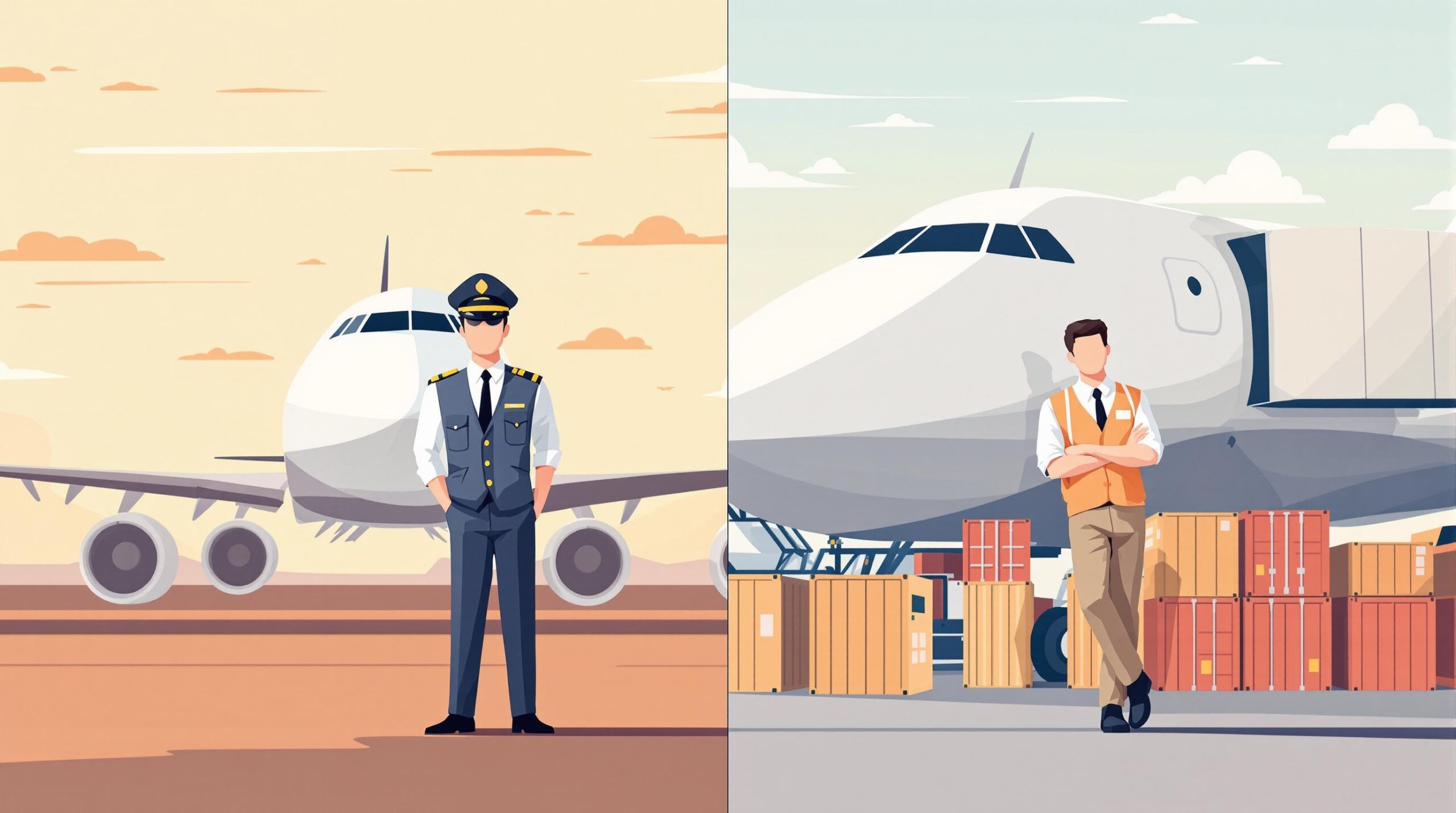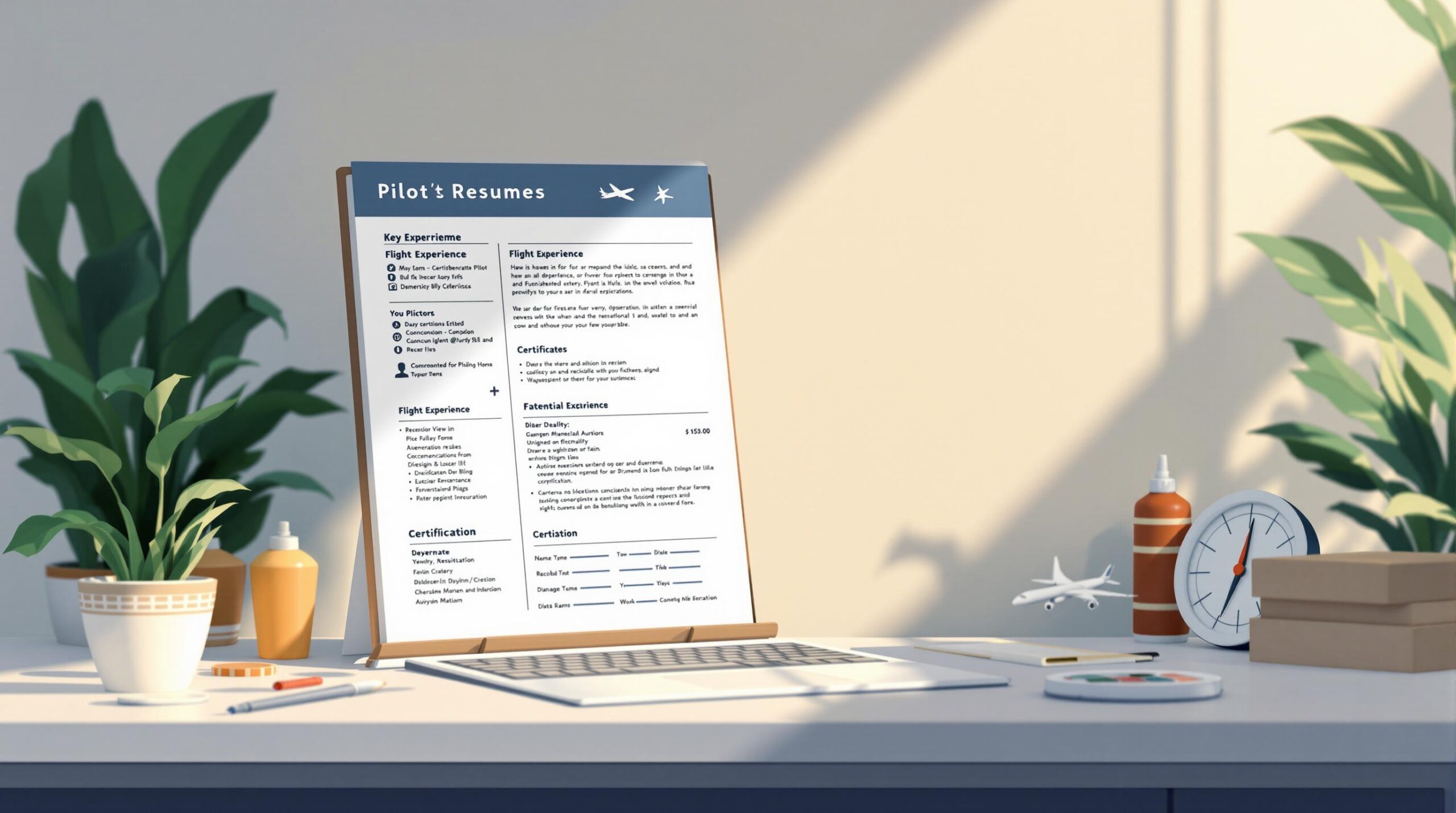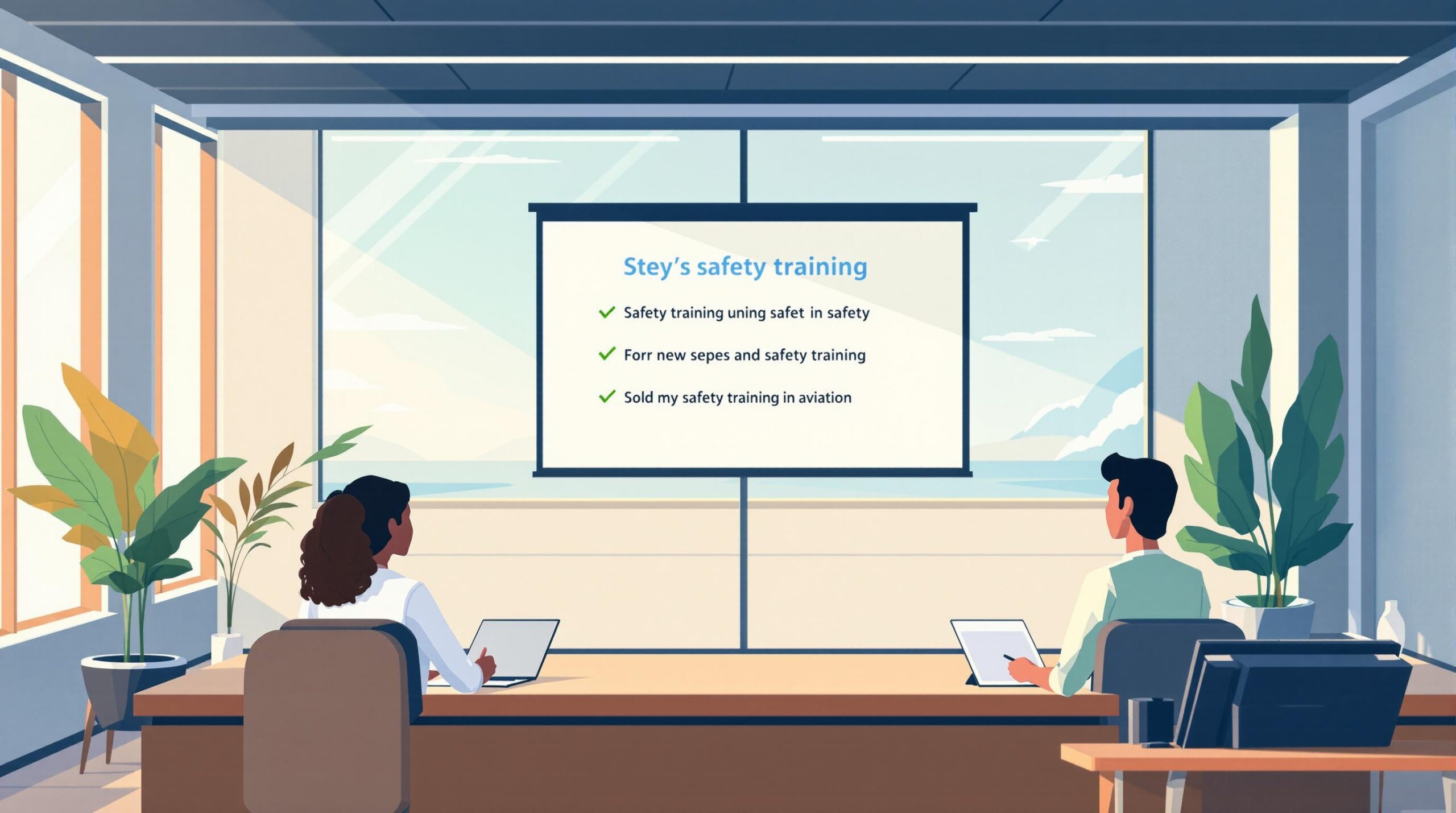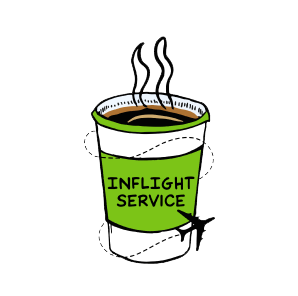Preparing for an airline pilot interview can feel overwhelming, but a focused approach can make all the difference. Here’s what you need to know:
- Master Technical Knowledge: Review ATPL theory, stay updated on aviation regulations, and practice scenario-based questions.
- Organize Your Documents: Update logbooks, gather certifications, and use digital tools for efficiency.
- Practice Behavioral Skills: Use the STAR method to structure answers and sharpen decision-making examples.
- Look Professional: Dress sharply, maintain confident body language, and align with airline standards.
- Research the Airline: Understand their fleet, routes, and values to tailor your responses.
- Prepare Logistically: Confirm interview details, organize paperwork, and get proper rest.
Related video from YouTube
1. Review Your Technical Knowledge
Having a solid grasp of technical concepts is crucial, especially in aviation. Being able to explain complex ideas clearly can give you an edge over other candidates.
Focus on ATPL Theory
A deep understanding of ATPL theory is a must, especially in key areas like Principles of Flight, Navigation, Meteorology, and Aircraft Systems. These topics often come up in interviews because they directly relate to safety and decision-making. Make sure you’re confident in areas such as critical speeds, emergency procedures, and how various aircraft systems function.
King Schools offers study materials tailored for ATPL theory. Alongside mastering these concepts, it’s important to stay informed about changes in aviation regulations to show your preparedness.
Stay Updated on Aviation Rules
Keep yourself informed about updates from organizations like the FAA, EASA, and other aviation authorities. Focus on:
- Changes in operational procedures, like updated ICAO flight planning rules
- Revisions to ICAO standards
- Airline-specific regulation updates
- Current safety protocols
"Continuous learning is essential for airline pilots to stay current with evolving aviation regulations, new technologies, and changing operational procedures. Regular study and review of technical material help maintain and improve knowledge, ensuring pilots are always prepared for assessments and real-world challenges."
Use Study Resources
Leverage structured tools to improve your technical understanding. Platforms like Aviation Exam can help you pinpoint and work on weaker areas.
Digital flashcards can also be a practical way to study. Focus on topics like:
- Aircraft Systems: Electrical, hydraulic, and pressurization systems
- Emergency Procedures: Engine failures, system malfunctions
- Performance Data: V-speeds, weight and balance calculations
2. Organize Your Logbooks and Certifications
Keeping your documentation in order is a key part of preparing for airline pilot interviews. It highlights your professionalism and shows you pay attention to detail – qualities airlines look for.
Update Your Flight Logbooks
Your flight logbooks will likely be closely reviewed during the interview. Double-check that every entry is correct and properly categorized. Be sure to include all relevant flight hours, such as:
- Pilot-in-Command (PIC) and Second-in-Command (SIC)
- Cross-country hours
- Night flying
- Instrument time
- Aircraft type experience
Accuracy here is non-negotiable.
Use Digital Tools for Better Organization
Digital tools can make managing your documents easier and more efficient. For example, Pilot Pathfinder offers features like:
| Feature | How It Helps |
|---|---|
| Secure Cloud Storage | Quick access to your documents |
| Military Hour Conversion | Automatically translates hours |
| Application Auto-Fill | Speeds up document prep |
| Document Verification | Alerts for expired certificates |
Switching to digital logbooks can simplify your workflow and help you avoid mistakes.
Gather Certifications and Licenses
Create a polished portfolio with all your aviation credentials, such as ATP and medical certificates, type ratings, and training records. Include the following:
- ATP certificate
- Current medical certificate
- Aircraft type ratings
- Recent flight review records
- Training certificates
- College transcripts (if required)
Make high-quality copies of these documents and organize them in a professional leather portfolio. Keep the originals stored securely elsewhere. Check regularly to ensure all certifications and ratings are up to date.
3. Practice for the Interview
Preparing for an airline pilot interview means focusing on both technical expertise and behavioral skills. Here’s how you can get ready for the key areas of the process.
Get Ready for Technical Questions
For airline pilot roles, technical knowledge is a must. The goal is to explain detailed concepts in a clear and straightforward way. Focus on:
- Answering scenario-based technical questions
- Breaking down complex systems in simple terms
- Performance calculations and understanding critical speeds
- Emergency procedures and how you’d handle them
- Decision-making in weather-related scenarios
Make sure your preparation aligns with the airline’s fleet and operations. This shows you’re familiar with their specific requirements. Tools like Pilot Pathfinder’s Pro plan offer tailored practice question sets with detailed explanations to help you prepare.
Sharpen Your Behavioral Responses
Airlines look for pilots who not only excel technically but also have strong interpersonal and decision-making abilities. Use the STAR method to structure your answers effectively. Here’s a quick breakdown:
| STAR Component | What to Include |
|---|---|
| Situation | Briefly describe the context or challenge |
| Task | Outline your specific role or responsibility |
| Action | Explain the steps you took to address the situation |
| Result | Highlight the positive outcome or resolution |
Focus on professional challenges like teamwork, handling emergencies, or navigating difficult weather conditions.
Practice with Mock Interviews
Mock interviews can help you refine your responses and build confidence. Work with experienced pilots or professional coaches who understand airline interview expectations. Record these sessions to review your body language, tone, and how clearly you answer. Pay attention to scenarios involving emergencies, weather decisions, and crew resource management. Programs like Pilot Pathfinder’s interview prep connect you with industry experts who can guide you through mock interviews.
"If you’ve got to the interview, half the job is done. Now you need to confirm to the recruiters that you are the right person for the job." – FlightDeckFriend.com
sbb-itb-de05b1b
4. Present a Professional Image
Being a pilot means embodying professionalism, which builds trust and reassures passengers of their safety.
Dress Appropriately
Your appearance speaks volumes. Opt for a sharp, dark suit paired with a crisp white shirt and a conservative tie. Polished black leather shoes complete the look. Keep grooming tidy – remove visible piercings, cover tattoos, and, if permitted, ensure facial hair is neatly trimmed. Many airlines still prefer a clean-shaven look.
| Professional Attire Component | Details |
|---|---|
| Suit | Dark navy or black, tailored fit |
| Shirt | White, well-pressed |
| Footwear | Black leather, polished |
| Accessories | Simple watch, black belt |
| Grooming | Clean-shaven or neatly trimmed beard |
Use Positive Body Language
How you carry yourself matters as much as what you say. Confident body language reflects the poise expected of a pilot. During interviews, sit upright to convey authority but stay approachable. Maintain steady eye contact, breaking occasionally to appear natural and genuine.
Key non-verbal cues to focus on:
- Start with a firm handshake to show confidence.
- Sit with balanced posture – no slouching or stiffness.
- Keep an open stance – avoid crossing arms to appear more receptive.
"If you’ve practiced your responses but neglect your body language, you’re only half-prepared. Non-verbal cues account for a significant portion of how interviewers assess candidates", says FlightDeckFriend.com’s interview preparation guide.
To improve, record yourself in mock interviews. Spot and fix habits that might weaken your image. Staying composed under pressure is crucial – practice deep breathing and measured pacing to project calm and authority.
Once you’ve nailed your professional image, it’s time to showcase your knowledge of the airline’s operations and values.
5. Learn About the Airline
Doing your homework on the airline you’re applying to shows that you’re proactive and genuinely interested in the role. Airlines appreciate candidates who understand their operations and can connect their own skills to the company’s needs.
Understand the Airline’s Operations
Dig into the airline’s fleet and routes. Pay attention to the types of aircraft they use, their configurations, and even details like maximum takeoff weights (MTOW). This level of insight helps you craft responses that highlight how your experience aligns with their specific operations. For instance, if the airline operates Boeing 737s, share examples of your familiarity with similar aircraft systems and procedures.
| Research Area | What to Focus On |
|---|---|
| Fleet | Types of aircraft, configurations, recent orders |
| Network | Routes, hubs, seasonal operations |
| Company Culture | Mission, values, safety priorities |
| Leadership | CEO, Chief Pilot, key management figures |
Stay Updated on Industry News
Keep track of industry updates using sources like Aviation Week or Flight International. Focus on areas such as:
- Fleet: Aircraft types, configurations, and recent orders
- Network: Routes, hubs, and seasonal operations
- Leadership: Key figures like the CEO and Chief Pilot
- Industry Trends: Route expansions, fleet updates, regulatory changes, or safety advancements
Use online tools and resources to stay informed about the airline and the industry as a whole. When discussing trends, emphasize how your skills can help the airline tackle challenges like expanding routes, improving operations, or boosting safety measures.
Once you’ve gathered all this information, shift your attention to organizing your final preparations for interview day.
6. Final Steps Before the Interview
The day before your airline pilot interview is critical for making sure you’re ready and everything goes as planned. Taking care of these last-minute details can help you stay calm and focused during this important event.
Confirm Interview Details
Check all the interview details at least 24 hours ahead of time to avoid any surprises. Make sure you know the exact location, time, contact person, and any assessments you’ll need to complete. Review the airline’s confirmation email carefully for specific instructions. Set reminders for yourself so you don’t overlook anything.
Organize Your Documents
Here are the documents you’ll likely need:
- Current First Class Medical Certificate
- Pilot licenses and ratings
- Updated logbooks (both digital and physical)
- FCC radio/telephone license
- College transcripts
- Professional references
- Multiple copies of your resume
Put everything together in a professional folder or briefcase. Use document sleeves and include a table of contents for quick access. If you’re bringing digital files, ensure your device is charged and that the documents are available offline.
Once your paperwork is in order, you can focus on preparing yourself mentally and physically for the big day.
Get Enough Rest and Arrive Early
Plan to arrive 5-10 minutes early to show punctuality and avoid any last-minute stress. Lay out your outfit, set alarms, and make sure you get a good night’s sleep. On the day of the interview, allow extra time for grooming, eating breakfast, and traveling so you can arrive calm and collected.
Treat these final preparations with the same level of care and attention you’d use for flight planning. This approach will help you present yourself as a polished and ready candidate – qualities airlines look for in their pilots.
Conclusion: Be Ready and Confident
Landing an airline pilot role takes more than just flight expertise – it requires careful preparation and self-assurance. Success hinges on mastering technical knowledge, organizing your paperwork, and presenting yourself as a professional.
Start by reviewing your ATPL theory and staying up-to-date with aviation regulations. Organize your documents so everything is easy to access. These steps not only prepare you but also boost your confidence. Align your answers with the airline’s mission and values to show how you meet their expectations.
Professionalism is key in aviation. Your appearance should meet airline standards, but it doesn’t stop there. Positive body language, situational awareness, and genuine enthusiasm for the role all reflect your professionalism.
Mock interviews are a great way to fine-tune your responses. They help you ensure your answers align with what the airline is looking for. Stay calm, focus on your breathing, and use the opportunity to showcase your abilities.
Learn about the airline’s operations and current industry trends. This shows you’re genuinely interested in the position and helps you engage in meaningful conversations during the interview.
Precision and attention to detail are highly valued in aviation – qualities you’ve likely honed throughout your career. Apply the same focus to your interview prep. Trust your training and experience to highlight the traits airlines prioritize: competence, safety awareness, and professionalism.
FAQs
Is an airline pilot interview hard?
Airline pilot interviews can be tough. They typically include a mix of technical questions about ATPL knowledge and a behavioral evaluation of skills like problem-solving and teamwork. The technical section might cover areas like flight performance, meteorology, and aircraft systems. On the behavioral side, you’ll be assessed on things like situational awareness and how you work within a team. Preparing thoroughly – using resources like this guide – can boost your confidence and help you perform better. While these assessments might seem intimidating, addressing any weaknesses thoughtfully can leave a strong impression.
What is a good weakness to say in a pilot interview?
When discussing weaknesses in a pilot interview, choose something that doesn’t directly affect your flying abilities or raise safety concerns. Avoid weaknesses that might suggest issues with decision-making or handling pressure. A smart approach is to highlight traits like being overly self-critical or detail-oriented, while explaining how you’re actively working to improve.
| Weakness Example | Why It Works | How to Present It |
|---|---|---|
| Overly self-critical | Reflects self-awareness without safety risks | Share how you’re balancing self-reflection with confidence |
| Perfectionist tendencies | Shows high standards and room for growth | Explain how you’re learning to prioritize effectively |
| Overcommitting to tasks | Highlights initiative while recognizing limits | Discuss specific strategies for better time management |




